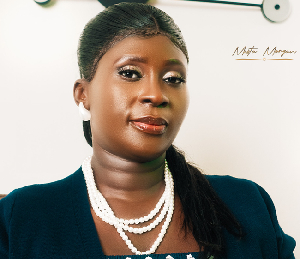A GNA feature by Osei Akwasi (GIJ Intern)
Accra, Aug. 17, GNA - Ghana's lunching of an Accelerated Development Programme (ADP) of Telecommunications in 1994 and the subsequent implementation of an economic liberalisation policy in 1995 created an environment that facilitated the country becoming an active player in the global network of the telecommunications industry.
The ADP, for instance, which among other objectives aimed at increasing the quality and quantity of telecommunications services, attracted private investors, who injected huge sums of money and expertise into the venture to develop the industry for mutual benefit. The tele-density (lines per 100 inhabitants) in the early 90s was 0.3 per cent and the main provider of telecommunications services was the State-run Post and Telecommunications (P&T) Limited; now separated into two entities Ghana Postal Services and Ghana Telecommunications (GT). The ADP made possible the injection of private capital into the hitherto State-run operator and the licensing of a second national operator, the Western Telesystems Ghana Limited (Westel).
This achievement was followed by the expansion of telecommunication technology within Ghana as companies like Celltel Limited (now Kasapa Communications Limited), Millicom Ghana Limited (Mobitel) and ScanCom Limited (Spacefon) emerged to provide mobile phone services. Ghana Telecommunications (GT) later introduced a mobile phone service (One Touch) in addition to its fixed line service.
Ghana has a growing telecommunication market with annual service and equipment revenues of over 400 million dollars and 200 million dollars, respectively. The current tele-density of 7.6 is higher than most Sub-Saharan African nations. The country has more than 702,000 mobile phone subscribers and more than 500,000 fixed line users, according to statistics from the US Department of Commerce on the Internet.
ScanCom Limited operates in all the 10 regional capitals and key towns across the country. The Company has introduced the GAP M744 phone service popularly known as "Space-to Space." In every nook of Spacefon coverage areas it is common to find a table with the inscription "Space-to-Space" ready to provide telephone service.
The GAP M744 phones are supplied to ScanCom Limited that hooks them on to their network by ACO Cellular Ghana Limited, a subsidiary of ACO South Africa Limited.
The Space-to-Space service, though at its infant stage, is playing vital roles in the economic and social development of Ghana. An important benefit is the extent, which the service has enhanced essay and fast connection to Spacefon and other networks in distant places within the country. Prior to the advent of this product, access to Spacefon via GT fixed line was a cumbersome. It took several attempts before a call went through. The product has widened the access to telecommunication remarkably.
Space-to-Space service serves as a market maker. It provided the foundation for ACO Cellular, a private investor, to enter into the telecommunication market. This is also applicable to small-scale business in Ghana. Space-to-Space assistants provide the service to a businessman conducting his trade down the streets or across cities. About 200 youths have been employed in Accra to provide the service. The improvement in telephone service would go a long in bridging the digital gap and facilitate transactions in "A Golden Age of Business In The Global Village".
Opinions of Wednesday, 18 August 2004
Columnist: GNA














